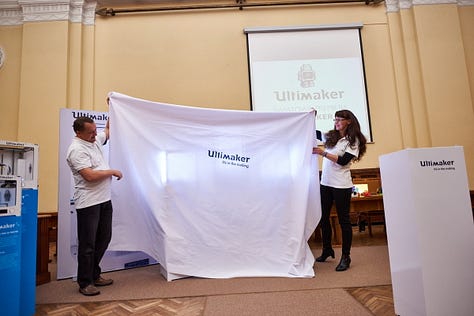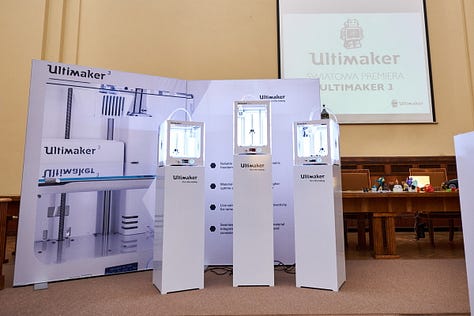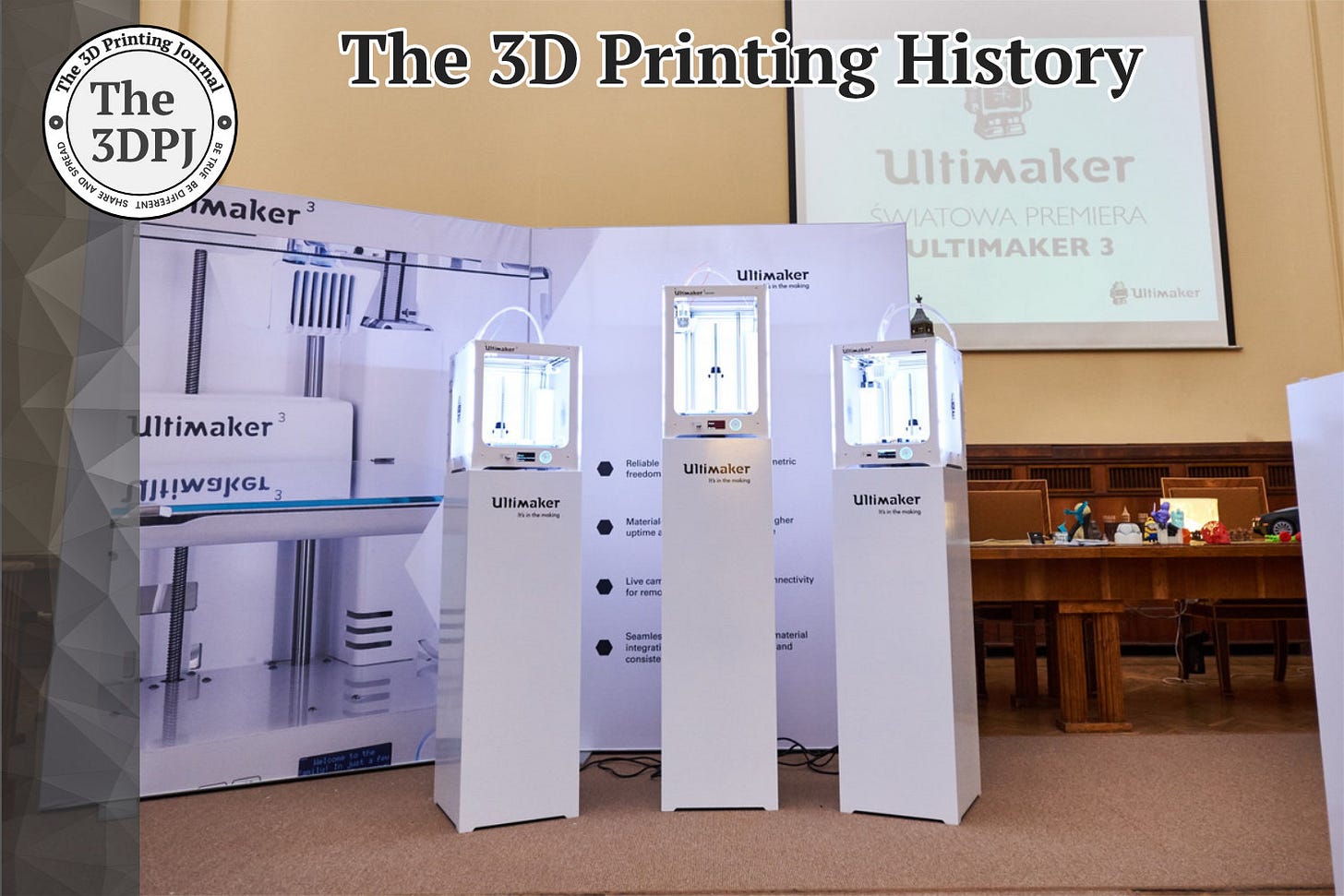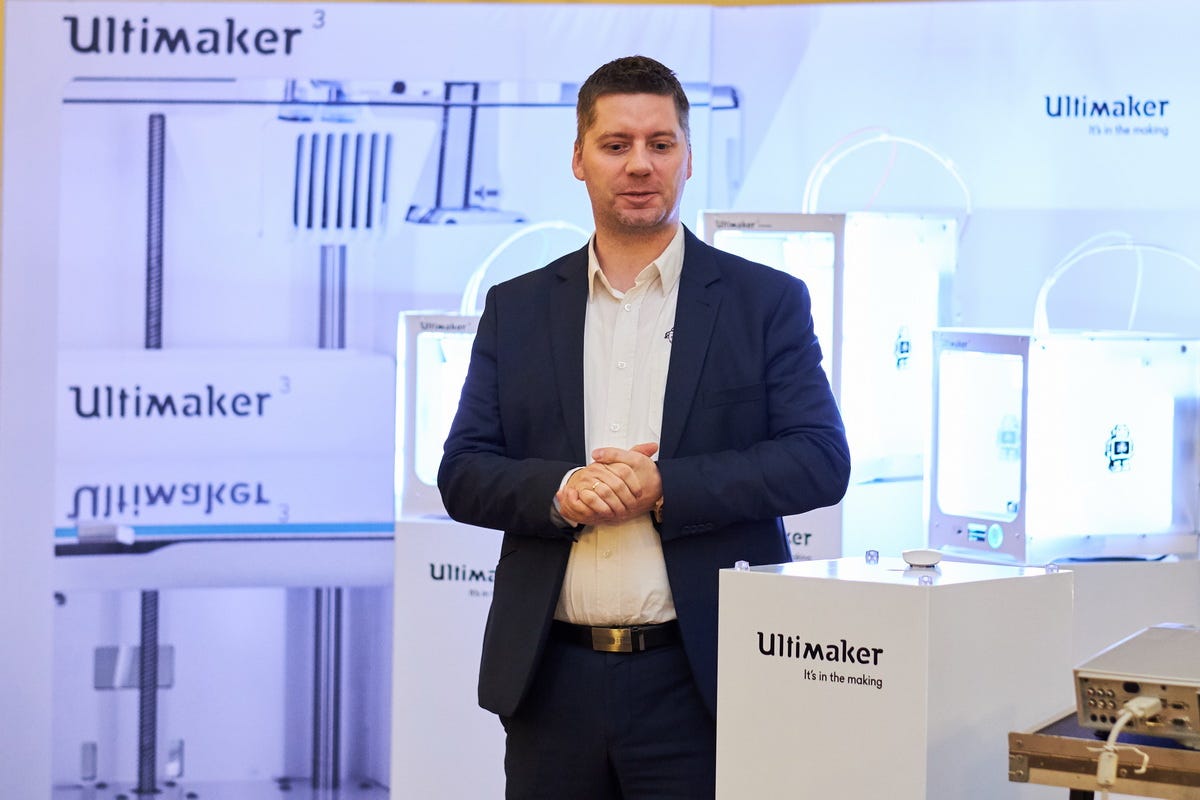10-18-2016: Ultimaker launched the international live premiere of the Ultimaker 3
A groundbreaking 3D printer that set the direction for the entire desktop AM industry for years to come
On October 18, 2016, the Dutch company Ultimaker introduced the third generation of their 3D printers – the Ultimaker 3. The device was equipped with dual print heads, featuring the first truly effective system for switching between them during printing; a dedicated water-soluble support material; fully functioning WiFi communication for desktop-class printers, and many other innovations. The Ultimaker 3 was a real breakthrough for its time and established the direction for the entire desktop FFF 3D printer sector. It also marked the beginning of the end for several competing manufacturers…
Ultimaker decided to hold the launch in a rather unprecedented way, organizing live premieres in several locations around the world simultaneously. I was selected to organize the event in Warsaw, at the Palace of Culture and Science – one of the most iconic locations in the Polish capital. The event was organized in collaboration with get3D, Ultimaker's distributor at the time.
Ultimaker introduced two versions right from the start – the standard and the Extended version (with an enlarged Z-axis). The key changes from the "2" included the dual print heads – Print Cores, which could be swapped with the press of a button. This was an engineering masterpiece, allowing for efficient and seamless operation. During printing, the heads changed position on the Z-axis using a simple but clever trick – the extruder moved to the corner of the 3D printer, engaged a switch, and that was it… Thanks to this, the Ultimaker 3 did not leave the characteristic smudges on the 3D printed models.



One of the heads was dedicated to working with support material (but there was also a version for regular filament). Ultimaker added water-soluble PVA to their offering. At the time, this was also a novelty on the market (in the sense that it actually worked).
The 3D printers were equipped with a WiFi module and were designed for networked operation in clusters. Their work was monitored by built-in video cameras, streaming the footage to a computer screen.
Overall, the Ultimaker 3 series was much more professional and was a significantly less attractive option for users interested in modifications or upgrades. It was aimed at users who valued ease of use and repeatability – an ideal solution for business, particularly in production or industrial contexts. Open-source enthusiasts and those who enjoyed tinkering with the inner workings of a 3D printer had to stick with the "2". The Ultimaker 3 marked the beginning of the brand’s "professionalization" and departure from its original roots.
Regardless of opinions on this shift – personally, I loved the U3. I consider this printer to be one of the best and most important in the history of desktop FFF 3D printing.
Source: www.centrumdruku3d.pl





